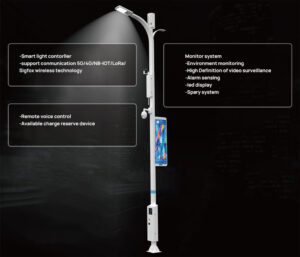The Comprehensive Guide to Upgrading Your Street Lighting with Photocell Relays
Streetlights play a crucial role in urban and suburban areas. They illuminate roads, sidewalks, and public spaces at night. More importantly, they augment road safety, increase smooth vehicular movement, and enhance the overall appeal of a neighborhood.
However, conventional street lighting systems often encounter issues like low efficiency and high maintenance costs, necessitating superior solutions. To counter these issues, it has become crucial to incorporate advanced tech such as photocell relays in street light upgrades.
These devices autonomously manage lights based on the surrounding light levels. This breakthrough promotes energy conservation, reinforces reliability, and reduces running costs.
This article aims to provide a comprehensive guide to upgrading street lighting with photocell relays.
Understanding Street Lighting Systems
Traditional street lights commonly use high-pressure sodium or metal halide lamps. These lamps produce light by burning gas or vapor inside the bulb. They are turned on and off manually or by timers based on a set schedule without considering the surrounding light levels.
Despite their widespread use, traditional street lights have some drawbacks.
One major issue is their energy inefficiency. They consume a lot of electricity even during periods of low light demand. Additionally, the costs of replacing bulbs and repairing fixtures can add up over time.
Why upgrade your street lighting systems with photocell relays
In recent years, advancements in lighting technology have led to the development of modern street lighting solutions. These include energy-efficient light-emitting diodes (LEDs) and smart lighting systems with sensors and controls.
LED lights use less electricity and last longer than traditional lamps. These lighting systems use photocell relays to automatically adjust lighting levels based on the surroundings, optimizing energy usage and reducing operational costs.
By upgrading to modern street lighting, communities can overcome the limitations of outdated systems. This can result in significant improvements in energy efficiency, maintenance, and overall performance.
What are Photocell Relays?
Photocell relays are tiny gadgets that manage lighting systems based on natural light. They sense shifts in light intensity and activate street lights in the dark, turning them off when it’s light.
Photocell relays’ main purpose is to ensure street lights switch on at twilight as the natural light dims and turn off at sunrise as light becomes brighter. This automatic regulation helps conserve electricity by limiting unnecessary lighting in daylight.
How Photocell Relays Work in Street Lighting Applications
Street lamps frequently come with photocell switches built into their control setups. These street light photocell has the ability to notice variations in the surrounding light levels. When darkness approaches and light intensity falls below a certain limit, typically at sunset, the outdoor photocell light sensor communicates with the street lamps to ignite.
Conversely, as morning dawns and the daylight intensity surpasses the set limit, the photocell instructs the lamps to power down.
This simple process enables the street lighting systems to run without manual intervention, adapting to fluctuating outdoor light situations. It aids in conserving energy and reducing the maintenance required for the lights.

Step-by-Step Guide to Upgrading Street Lighting with Photocell Relays
Upgrading street lights with photocell relays involves dealing with electrical equipment. Thus, it’s important to understand the methodology first. However, its recommended to get the assistance of expert.
If you want to do this on your own, below is a step-by-step guide.
Preparing for the Installation Process
Before starting the installation, assess the current street lighting system. Look at the number and location of the fixtures, as well as any existing controls or wiring. Gather all the necessary tools and materials, such as photocell relays, wiring, connectors, and mounting hardware.
Prioritize safety by following proper procedures and using appropriate personal protective equipment (PPE). Turn off the power to the lighting circuit before beginning any work.
Installing a Photocell Relay
Choose a suitable location on the light fixture or pole to mount the photocell relay. Make sure it can receive unblocked sunlight.
Follow the manufacturer’s instructions to wire the photocell relay to the lighting circuit. This usually means connecting the relay’s input wires to the power source and the output wires to the light fixture.
Once the wiring is done, mount the photocell relay securely using the provided hardware. Make sure the sensor is facing outward and positioned correctly to detect ambient light levels.
Testing and Calibration
Switch on the lights circuit again after you’ve set it up. Make sure the photocell relay is functioning as it should. To see if the street lights are operating right, fool the photocell by blocking light, simulating nightfall, and then let it see the light again.
This will prove whether lights are switching on and off as they ought to.
Benefits of Upgrading with Photocell Relays
Photocell relays help optimize energy usage by only turning on lights when needed. This results in lower electricity bills and operational costs. Further, by reducing unnecessary energy consumption, photocell relays contribute to a greener, more sustainable environment by decreasing carbon emissions.
Talking about safety, consistent and reliable lighting provided by photocell relays enhances visibility for pedestrians and drivers, promoting safety in public spaces. Using photocell relays means street lighting systems require less frequent maintenance, saving time and resources with fewer operational hours and automated control.
Factors to Consider Before Upgrading

Before upgrading your street lights, take a close look at the current situation. Check the condition, location, and layout of the existing lights to see if they will work with photocell relays. This will help you identify areas that need improvement.
Analyze the potential savings and return on investment (ROI) from the upgrade. Look at factors like electricity usage, maintenance costs, and the lifespan of the photocell relays. This will give you a better idea of the benefits. Make sure you understand the local regulations and lighting standards.
Familiarize yourself with the requirements so you can ensure compliance and get the necessary permits for the project. When choosing photocell relays, consider features like sensitivity, weather resistance, and compatibility with your existing infrastructure. By doing this, you select the right equipment for the upgrade.
Final Words
Upgrading street lights with photocell relays can offer many advantages. These include saving energy, enhancing safety, and reducing maintenance needs.
However, for the best results, consider using LONG-JOIN photocells – they are known for their dependability and effectiveness in outdoor lighting. Adopting this technology can help create a brighter, more efficient, and sustainable future for communities everywhere.






